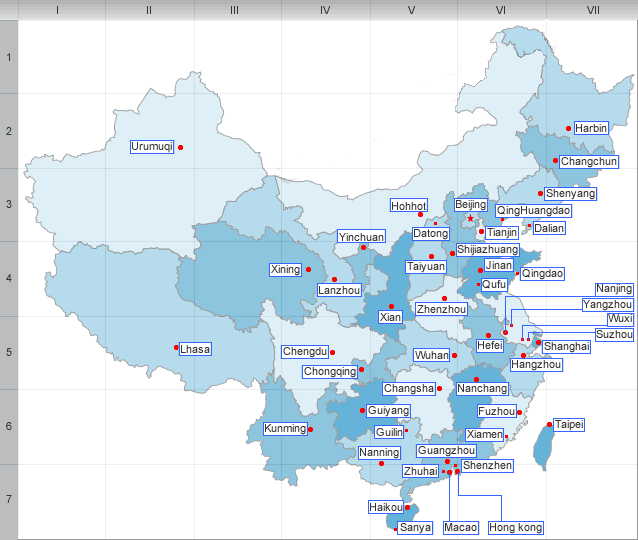Jiading Overview
Jiading lies in the northwest part of Shanghai Municipality, at 121°15' E and 31°23' N. It borders with Shanghai's Baoshan and Putuo Districts in the east, Jiangsu's Kunshan City in the west, Shanghai's Minhang, Changning and Qingpu Districts in the south, and Jiangsu's Taicang City in the north. The total area is about 463.55 square kilometers, and the permanent population is over 1.3 million.
The whole territory of Jiading is flat, with the northeast part being slightly higher and the southwest part being slightly lower. The Wenzaobang River, the Lianqi River and the Loutang River run east-west and empty themselves into the Yangtze River and the Huangpu River after passing through Baoshan District. Besides, the Yantietang River and the Hengli River run south-north and join the Wusong River and the Liuhe River. The total length of all rivers in the district is over 1,800 kilometers, with the average river density being four kilometers for per square kilometers.
Jiading boasts of a world-rate communications network. In 1989, telephone switch was automated county-wide. In 1994, the district's telephone switch was programmed and telephone transmission was digitalized and optic-fibered. In 1997, a teleconferencing network was introduced throughout the district and the towns in its jurisdiction. In 1999, ISDN and ATM broadband networks were introduced. In 2001, an office decision-making service system was introduced for the administrative organs of the district and a government gateway website, named Shanghai's Jiading, was opened. In 2003, broadband optic-fiber network covered the whole district. In 2006, telephone switch capacity rose to 599,000 lines, with the fixed telephone users rising to over 354,000. Currently, the district is trying to turn itself into the first "wireless city" on Chinese mainland.
Jiading has sufficient supply of power, fuel gas and running water. Currently, natural gas is used throughout the district and the drinking water comes from the Yangtze River.
Jiading is easily accessible. The seat of the district government is only 30 kilometers from Shanghai's downtown area, 75 kilometers from the Pudong International Airport and about 25 kilometers respectively from the Hongqiao Airport, the Shanghai Railway Station and the Zhanghuabang International Containers Dock. It has the Shanghai-Nanjing Railway and the Shanghai-Hangzhou Outer Ring Railway running through. The highway network mainly comprises A5 Highway (Jiajin Expressway), A11 Highway (Huning Expressway), A12 Highway (Hujialiu Expressway), A30 Highway (Suburban Ring Expressway), Huyi Highway (204 national highway), Chao'an Highway (312 national highway), Jia'an Highway, Bao'an Highway, Jiasong North Road, Baoqian Highway and Liuxiang Highway. The total length is over 1,000 kilometers. It has 78 bus routes, including the Beijia Route and Bei'an Route, to link with Shanghai's downtown and suburban areas and with all the towns in the district. The total length of the bus routes is nearly 1,000 kilometers. In addition, the district also operates inter-provincial railway service to Zhejiang, Jiangsu, Anhui and other provinces and has transit railway service from Jiangsu, Zhejiang, Anhui, Shandong, Henan, Sichuan, Hubei and other places. The district has 20 inland waterways, with a total length of 232 kilometers. In particular, a 17.7-km section of the municipal waterway, the Wenzaobang River, is in the territory of the district.
| PREV:Jingan Overview | Next:Kaiyuan Overview |



